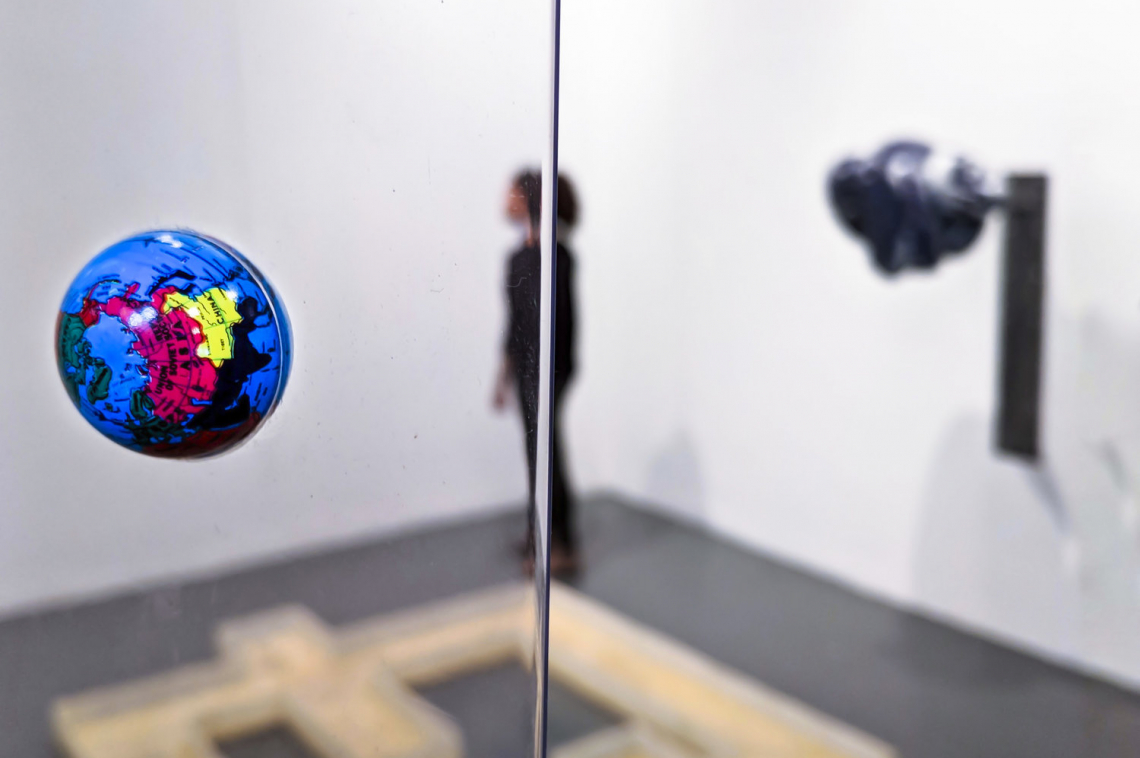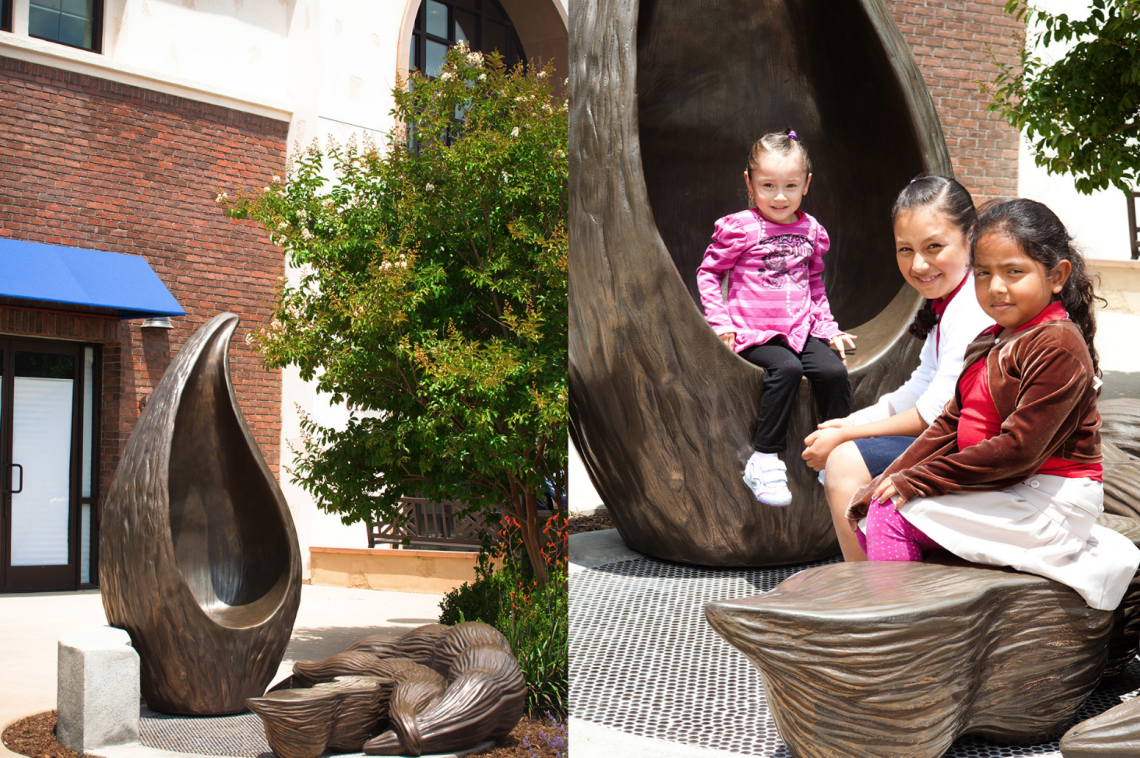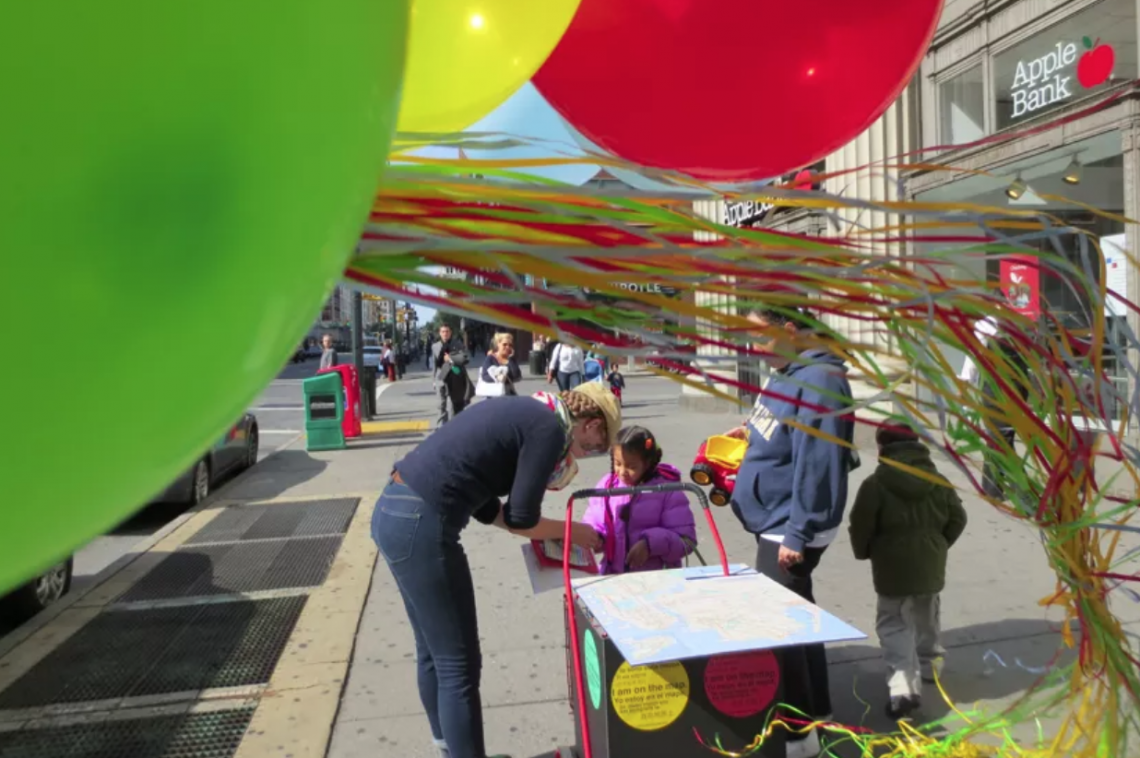


What roles can artists play in city government? How can artists in residence support arts and culture strategies in the public arena? What do artists need for their municipal engagements to succeed?
Artists Elizabeth Hamby, Jules Rochielle Sievert, and Onyedika Chuke joined ArtPlace’s Sarah Calderon for a discussion about what works and what doesn’t—and to what ends—for artists in residence in city agencies, with a focus on New York City.
Hamby works with NYC’s Department of Health and Mental Hygiene, specifically in the areas of public housing and health, and with the agency’s Center for Health Equity. “I’m interested in cities,” she said, “because they show us the core complexities of life.” In her work, she looks at the intersections of public art, public space, and public health to address the question: What creates health?
She described an NYC-based Dungeons & Dragons-style adventure game she co-created that helps to explain the concepts of structural racism and violence to government staffers. Players are organized into families and undergo all the ups and downs of life: they have children, mourn deaths—and face different opportunities and barriers depending on their race, ethnicity, and nationality. Hamby said one participant became angry while playing, complaining that, “depending on which family you’re born into, there’s no way you can win this game!” (Yes, participant: that’s the point.) See our blog post from earlier this year for more of Elizabeth’s work.
Legal education and access to justice
Sievert works largely in legal education and access to justice, and is interested in the role play can have in workplaces. She described a residency she did in Santa Ana with John Spiak, who implemented the GCAC Artist-in-Residence Initiative at California State University Fullerton’s Grand Central Art Center (GCAC). “He invited me to come play and see what it would look like,” she said. “One year turned into three years.” Sievert said the neighbors she was working with didn’t want to go to the local cultural center because of the history of gentrification that surrounded it, so she asked them, “Where will you meet me?” “I went to every community event I was invited to and didn’t try to lead anything; I just participated,” she said. Eventually, working with the local art commission and area teachers, she was able to provide an arts curriculum to the 350 students enrolled in the local elementary school, who had gone without art program for three years.
That experience led to Sievert another residency with NYC’s Department of Veterans Services and Department of Cultural Affairs that was embedded within the Harlem Vet Center. There, she developed a storytelling project with female veteran of color Christine Tinsley which “worked to give visibility to female vets and bring them into contact with one another to let them talk about the issues they were dealing with.” Sievert said she doesn’t feel that residency was a success because it only lasted one year, and the process of partnering with other organizations had only just begun. “I’m more than happy to talk about failure, or points in a residency where I thought, ‘Okay, I’ll think about this differently,’” she said. “A better way to look at this one was as prototyping. It was two and a half or three years ago, and now it looks like we might be getting some new funding to support female vets. Maybe it wasn’t the right time for it to happen then, but it is now.”
An artist in residence in the dept of correction
Chuke is an artist in residence with NYC’s Department of Correction. “This is the first year they’ve imagined an artist in that role to work as an advocate and look at policy,” said Chuke, who described the agency’s culture in part by mentioning he was assigned a cubicle in their offices. “First we had to figure out the dress code,” he says. “Slacks; button down shirt? I have those things, but I don’t like to wear them! But then I thought, ‘That language is what they understand, so maybe I will wear them.’” Chuke explained that the culture learning curve extended to the security training he had to undergo in order to visit Rikers Island and facilitate art projects with residents there. “It’s the most intense residency I’ve ever been a part of,” he said. He commented on the few miles but infinite distances that separate the residents of Manhattan’s Upper East and Upper West Sides from those living on Rikers: “Those people are right there, but they’re invisible—until they get released, and then they’re right back in the neighborhood,” he said. “We can use art as a way to recognize and see each other.”
Chuke is originally from Nigeria and has lived in New York since the 1990s. “In some cases, bringing art is a way of fitting in,” he said. In addition to his studio practice and participation in residencies, Chuke serves on the executive board of Foster Pride, which helps youth in foster care reach their potential through mentorship and the arts.
An audience member asked Sievert, who works with NuLawLab (the innovation laboratory at Northeastern University School of Law), about employing the arts in the notoriously inhospitable setting of housing courts.
Sievert sympathized that housing courts can be a miserable maze for visitors, especially when rooms aren’t properly labeled, or people having conflicts are made to wait in close proximity to one another. She said that in some Boston housing courts, she had started to see children’s artwork displayed on the walls. “That was a good entry point,” she said. “That showed us there was flexibility.” She spoke of the NuLawLab project Stable Ground, which is working to better understand housing insecurity-based trauma by embedding artists, legal designers, and trauma experts into local communities to hold facilitated conversations and generate art exhibitions and art-making events. She shouted out some of the participating local artists: Ngoc-Tran Vu, L’Merchie Frazier, and Anna Meyer.
Calderon asked the panelists why they do the socially connected work they do.
Hamby replied, “When I got over the false idea that being an artist meant working by yourself, I felt a lot better and my work got a lot better.” She said work done for the purpose of social change “feels deeply embedded in the world and feels very contingent and connected. It’s about wanting to be in the world and to intentionally be in different situations. I thrive on that.”
The panelists discussed the role time plays in their work. Sievert said, “I like to take a long time with my work, personally. Embedding myself in a community takes a year: finding the people who want to make something together and finding the resources to do it. I find myself being happy at the five-year mark: now we’re doing interesting things. The longer I’m able to stay in a particular system, the better the work is.”
Chuke agreed that a year is seldom long enough to make the most of a residency. “That first year is like an introduction; we have to turn off our own expectations,” he said. “These government institutions are there to last; artists can be in and out. So it takes a while.”
When Calderon asked about the support artists need in government residencies and how such roles might become normalized, Hamby said trust can play a role. “Some of what’s facilitated this work for me is working with people who are okay with ambiguity and willing to turn a blind eye when things they don’t quite understand are happening,” she said.
Chuke identified finding apt partners within an organization and meeting people where they are as other keys to success. “I’ve worked with Residency Unlimited,” he said. “We look at artists’ resumes and try to find the right partners for them on the city level: who’s a good mentor for this person? They do weekly check-ins about goals, and what didn’t work... It creates a manual that other artists can pick up next time and that creates a record and a history.”
Hamby pointed out that there are a lot of artists working in city government who don’t always identify as artists, or feel permitted to wear their ‘artist hats’ at work. “I call them ‘naturally occurring artists in residence,’” she said. “When someone hears you’re an artist, they’ll come whisper to you, ‘I’m actually a photographer,’ or ‘I dance on the weekends.’ Art gives us an opportunity to reveal ourselves to one another, and the more of us who reveal ourselves to one another, the more of us reveal ourselves to one another...”
She also said that she worked for another city agency before the Department of Health. “Those folks had sought me out because of my art practice,” she said. “But when I asked if my title could be ‘Artist,’ they said no. In the end, that taught me that it doesn’t matter what they call me or what they call the work; what matters is the work.”
This session took place on May 4, 2018 at the Creative Placemaking Leadership Summit in Madison, New Jersey.





